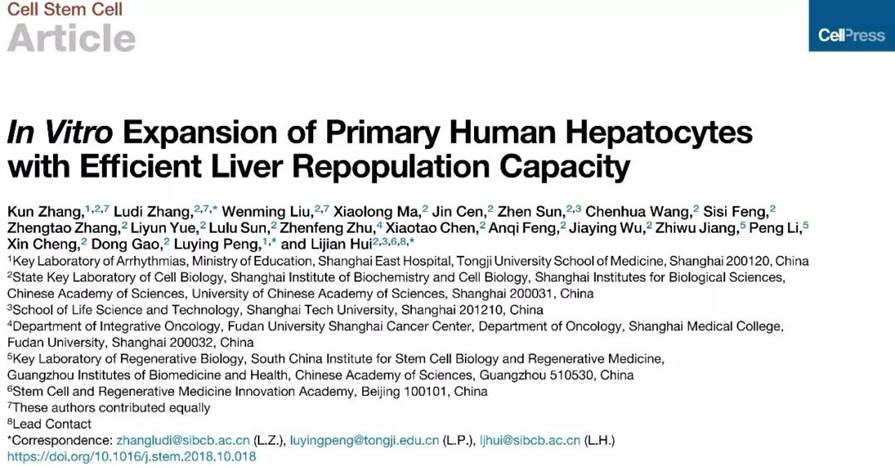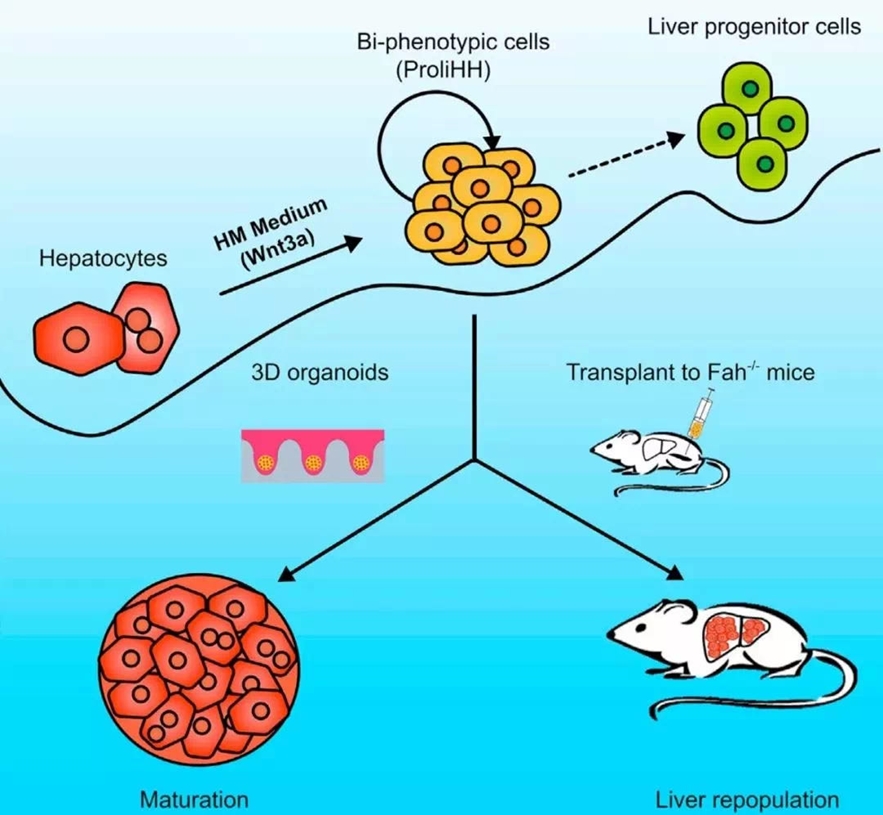Liver disease is a serious threat to human life and
health. At present, the most effective treatment for end-stage liver disease
and acute liver failure is orthotopic liver transplantation. In view of the
shortage of donor liver and the expensive cost of treatment, cell therapy and
stem cell technology have prompted researchers to gradually try to use human
primary hepatocyte and hepatocyte-like cells instead of liver transplantation
to treat liver disease. However, it is very difficult to culture human primary
hepatocytes in vitro, which has always been a problem in the field.
On November 8th, Peng Luying research group of Tongji
University School of Medicine, in close cooperation with Hui Lijian research
group of Shanghai Research Institute of Biochemistry and Cell, Chinese Academy
of Sciences, published an important research achievement titled In vitro
expansion of primary human hepatocytes with efficient liver repopulation
capacity in the internationally famous academic journal Cell Stem Cell.

The main innovation points of this research included:
1. A whole set of new human hepatocyte culture system in
vitro was established, which could expand the primary human hepatocytes as much
as 10000 times in vitro, and it was detected that multiple individuals of different
races, genders and ages had similar proliferation ability in this culture
system, which would provide sufficient cell sources for clinical treatment of
hepatocytes.
2. The proliferating human hepatocytes (ProliHH) cultured
in this system still retained the expression of some liver functional genes and
maintained the function of some hepatocytes, and were in the dual phenotype
state of co-expression of liver functional genes and liver precursor genes.
Compared with liver precursor cells, the function of ProliHH in vitro and in
vivo was more similar to that of human primary hepatocytes.
3. Using 3D culture to establish a new hepatic induction
system, ProliHH could rapidly mature in vitro, which provided a very stable
human hepatocyte research system for researchers studying drug metabolism in
vitro, hepatophilic virus infection and some other directions.
4. The most important discovery was that, while ProliHH
was transplanted into the liver of the immunodeficient mice who were Fah
knockout. These cells showed the ability of integrating and regenerating
similar to the primary human hepatocytes in vivo, and they could secrete up to
Mg level of human albumin and showed the specific ability of human drug
metabolism. The transplanted ProliHH showed a very similar therapeutic effect
with primary hepatocytes in terms of reducing liver injury and improving
survival rate of mice.
This research work effectively solved the problem of
the source of human liver parenchymal cells, which would provide an ideal
research system for the model construction and drug screening in vitro of liver
diseases, and lay a solid foundation for the treatment of hepatocyte
transplantation.

Zhang Kun, Ph.D. student from Peng Luying’s lab and Dr.
Zhang Ludi from Hui Lijian’s lab were the co-first authors of this paper, and
Prof. Hui Lijian, Prof. Peng Luying and Dr. Zhang Ludi were the
co-corresponding authors of this paper.
